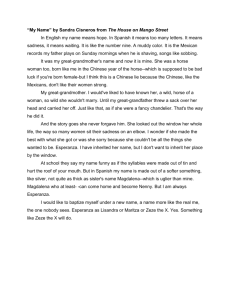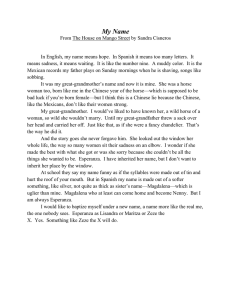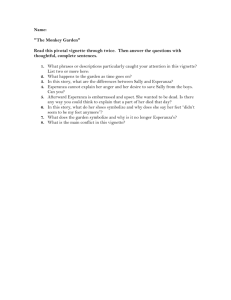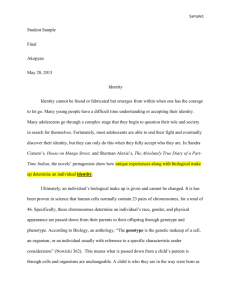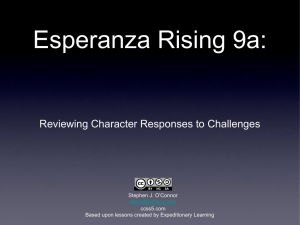Mango Street summary
advertisement
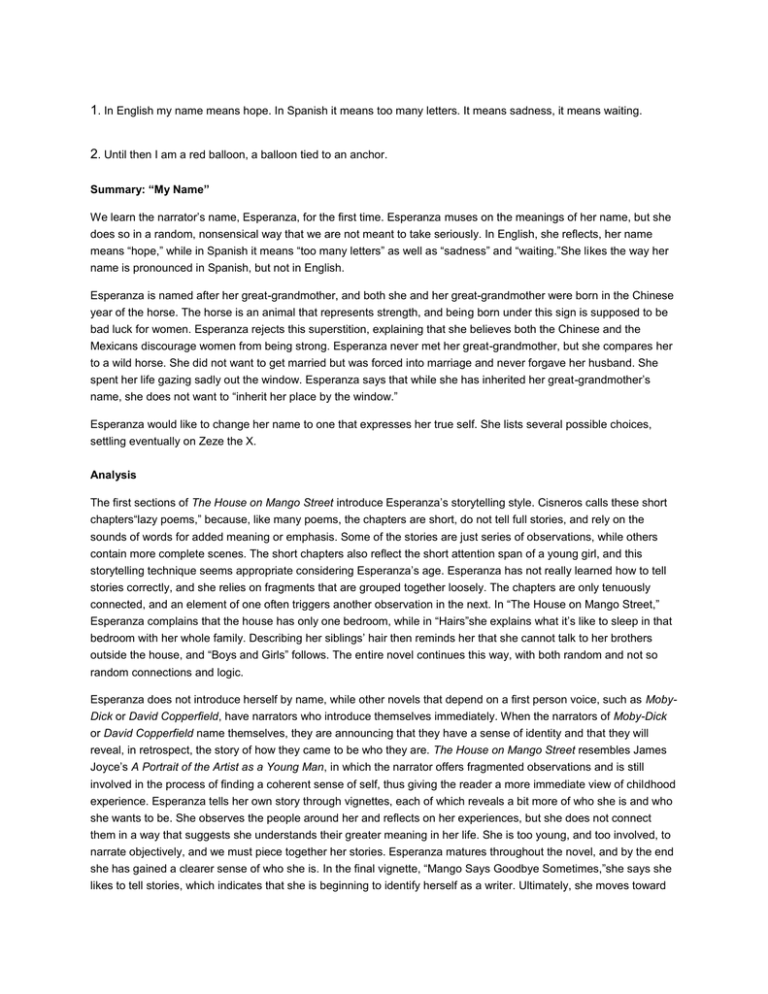
1. In English my name means hope. In Spanish it means too many letters. It means sadness, it means waiting. 2. Until then I am a red balloon, a balloon tied to an anchor. Summary: “My Name” We learn the narrator’s name, Esperanza, for the first time. Esperanza muses on the meanings of her name, but she does so in a random, nonsensical way that we are not meant to take seriously. In English, she reflects, her name means “hope,” while in Spanish it means “too many letters” as well as “sadness” and “waiting.”She likes the way her name is pronounced in Spanish, but not in English. Esperanza is named after her great-grandmother, and both she and her great-grandmother were born in the Chinese year of the horse. The horse is an animal that represents strength, and being born under this sign is supposed to be bad luck for women. Esperanza rejects this superstition, explaining that she believes both the Chinese and the Mexicans discourage women from being strong. Esperanza never met her great-grandmother, but she compares her to a wild horse. She did not want to get married but was forced into marriage and never forgave her husband. She spent her life gazing sadly out the window. Esperanza says that while she has inherited her great-grandmother’s name, she does not want to “inherit her place by the window.” Esperanza would like to change her name to one that expresses her true self. She lists several possible choices, settling eventually on Zeze the X. Analysis The first sections of The House on Mango Street introduce Esperanza’s storytelling style. Cisneros calls these short chapters“lazy poems,” because, like many poems, the chapters are short, do not tell full stories, and rely on the sounds of words for added meaning or emphasis. Some of the stories are just series of observations, while others contain more complete scenes. The short chapters also reflect the short attention span of a young girl, and this storytelling technique seems appropriate considering Esperanza’s age. Esperanza has not really learned how to tell stories correctly, and she relies on fragments that are grouped together loosely. The chapters are only tenuously connected, and an element of one often triggers another observation in the next. In “The House on Mango Street,” Esperanza complains that the house has only one bedroom, while in “Hairs”she explains what it’s like to sleep in that bedroom with her whole family. Describing her siblings’ hair then reminds her that she cannot talk to her brothers outside the house, and “Boys and Girls” follows. The entire novel continues this way, with both random and not so random connections and logic. Esperanza does not introduce herself by name, while other novels that depend on a first person voice, such as MobyDick or David Copperfield, have narrators who introduce themselves immediately. When the narrators of Moby-Dick or David Copperfield name themselves, they are announcing that they have a sense of identity and that they will reveal, in retrospect, the story of how they came to be who they are. The House on Mango Street resembles James Joyce’s A Portrait of the Artist as a Young Man, in which the narrator offers fragmented observations and is still involved in the process of finding a coherent sense of self, thus giving the reader a more immediate view of childhood experience. Esperanza tells her own story through vignettes, each of which reveals a bit more of who she is and who she wants to be. She observes the people around her and reflects on her experiences, but she does not connect them in a way that suggests she understands their greater meaning in her life. She is too young, and too involved, to narrate objectively, and we must piece together her stories. Esperanza matures throughout the novel, and by the end she has gained a clearer sense of who she is. In the final vignette, “Mango Says Goodbye Sometimes,”she says she likes to tell stories, which indicates that she is beginning to identify herself as a writer. Ultimately, she moves toward an understanding of how her experiences have affected her and how they will continue to influence her as she gets older. Esperanza’s great-grandmother, also named Esperanza, is the first of many women who are trapped by men, society, and their own sense of defeat. The elder Esperanza was initially a strong woman, but after her forced marriage she spent most of her days sitting by a window. Windows appear frequently in situations similar to the elder Esperanza’s, suggesting that these trapped women do not accept their cages blindly but instead are always aware of the world outside that is off-limits to them. Esperanza demonstrates her own awareness of the larger world when she observes that being born in the year of the horse isn’t necessarily bad luck, but that the Mexicans and Chinese don’t like their women to be strong like horses. Esperanza is just a young girl from the barrio, hardly knowledgeable enough to generalize about the Chinese, and her observation suggests wisdom beyond her years. Most likely Esperanza heard such a theory from her mother or one of the other mujeres, or women, surrounding her. The first few sections of The House on Mango Street suggest that Esperanza will focus on the importance and experiences of her family, but this focus eventually expands. Esperanza’s family and house fill these first few sections, so specifically that Esperanza even discusses the security she finds in the smell of her mother’s hair. However, the introduction of the family is only an introduction to what will become Esperanza’s larger family, the barrio. She may find comfort in her mother’s hair, but Esperanza does not actually mention her mother again for another thirty-five sections. Although the novel begins narrowly, with the immediate family and house as subjects, Mango Street itself, with its larger community, eventually occupies Esperanza’s life, with home and family constituting only the starting point. Until then I am a red balloon, a balloon tied to an anchor.
